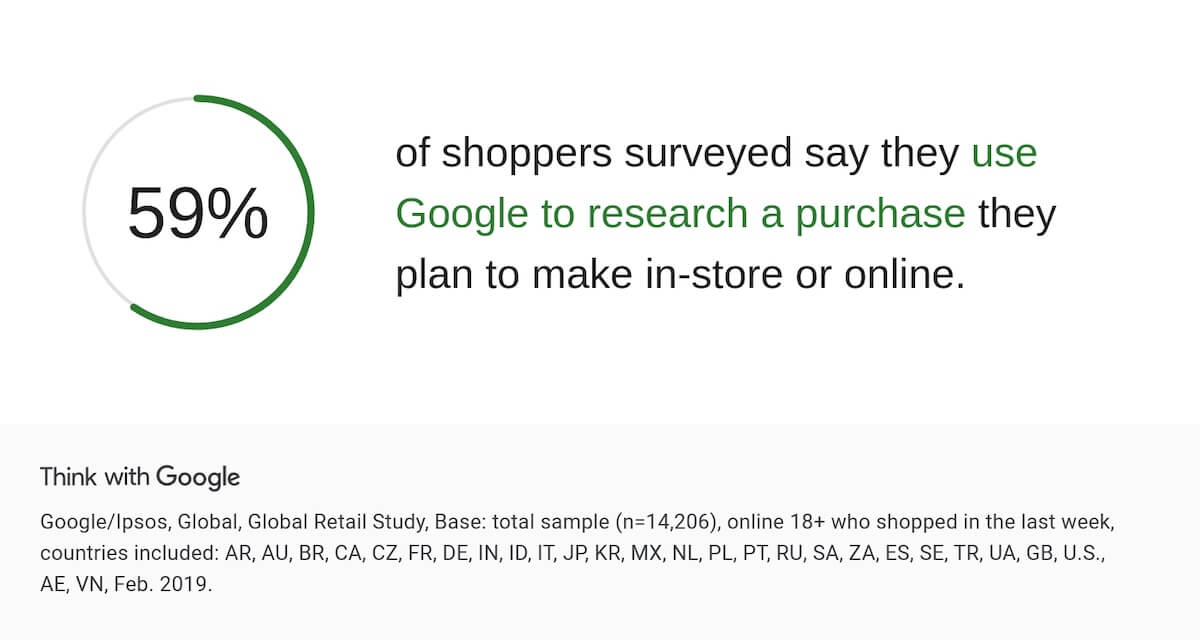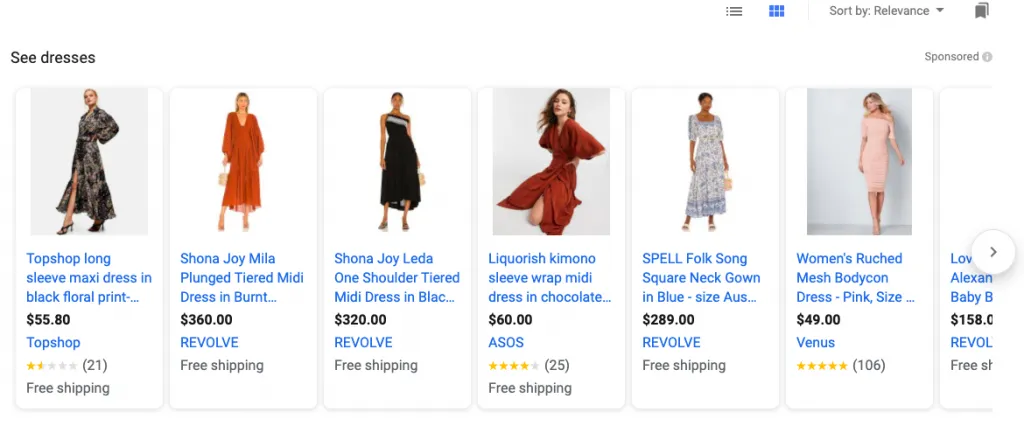As an eCommerce business owner, your primary goal is to drive more traffic and increase sales. One of the most cost-effective channel to drive more traffic is SEO. Sure it takes time, but the long term results of SEO far outweigh social media marketing or paid advertising.

A recent statistic provided by Google said 59% of shoppers first research on Google before making a purchase decision.
The average conversion rate for eCommerce website is around 2.5 to 3%.
With the right strategies, even a small investment in SEO can drive significant traffic and conversions. By focusing on cost-effective SEO techniques like optimizing for long-tail keywords, leveraging user-generated content, and improving site speed, eCommerce websites can boost their visibility in search engines and increase sales without breaking the bank.
This guide will walk you through the most effective, low-cost SEO Tips designed to help eCommerce businesses grow on a limited budget.
1. Optimize Product Pages for Long-Tail Keywords
Why it works:
Long-tail keywords are less competitive and more specific, making them easier to rank for. They also attract users who are further along in the buying journey.
Action:
Identify product-specific long-tail keywords and incorporate them into product titles, descriptions, meta tags, and alt text for images.
Example:
Lets assume you are selling Polo T-shirts. Instead of just listing the product as "Polo T-Shirts" use a descriptive text such as "Brown Polo T-shirts for Men".
2. Use User-Generated Content (UGC)
Why it works:
UGC such as reviews, testimonials, and photos can build trust and naturally increase keyword diversity on your website. 86% of consumers are more likely to trust a brand that shares UGC compared to 12% who are likely to purchase a product promoted by influencers.
Action:
Encourage customers to leave reviews or share photos. Display these prominently on product pages to boost both credibility and SEO.
Example:
One of the most visible UGC created campaign is “Shot on iPhone” campaign. Apple encourages professional and non-professionals to take creative pictures in low light with their iPhone cameras. The campaign focused on everyday visuals, which helped to spark more customer interactions and engagement.

3. Optimize for Mobile SEO
Why it works:
Most eCommerce traffic comes from mobile devices. Google prioritizes mobile-friendly sites, so optimizing your site for mobile will improve rankings and conversions.
Action:
Ensure your eCommerce website is responsive and loads quickly on mobile devices. Use Google’s Mobile-Friendly Test to check your site’s performance.
You may want to read: How Mobile Optimization Can Drive Your Online Business Growth
4. Improve Site Speed
Why it works:
Slow-loading websites lead to higher bounce rates, which hurt your SEO. Site speed is a direct ranking factor for Google, especially for eCommerce.
Action:
Compress images, use browser caching, and reduce unnecessary scripts to improve page loading times.
You may want to read: How to Optimize Your eCommerce Website for Higher Conversions
5. Focus on Product Category Pages
Why it works:
A category page serves as a hub for users to navigate to individual product pages on a website easily. By following product page links from this single page, search engines are also able to discover and index new products quickly. Category pages often have the potential to rank for broader keywords and attract more traffic than individual product pages.
Action:
Optimize category page content by using relevant keywords, adding unique descriptions, and making sure they are easily navigable.
Example:
Organize, showcase, and optimize a group of products that have similar uses or attributes on an ecommerce website or online store. Let's assume our previous example of "Polo T-Shirts" - club multiple polos into one category and call it "Buy Polo T-shirts for Party". This logic follows a similar concept to long-tail keyword but is now used for categories.
6. Leverage Local SEO for eCommerce
Why it works:
If you sell products locally or offline as well - optimizing for local SEO can drive targeted traffic from nearby customers.
Action:
Set up a Google My Business profile, get listed in local directories, and use location-based keywords on product and category pages.
7. Create SEO-Optimized Blog Content
Why it works:
Blogging allows you to target long-tail informational keywords that can bring users to your store. Content such as buying guides, product comparisons, and tutorials can attract customers at different stages of the buying cycle.
Action:
Regularly post content around the topics your target customers are searching for, and internally link to your product pages from your blog.
8. Use Schema Markup
Why it works:
Rich snippets from schema markup (like product ratings, prices, and stock availability) can increase your website’s click-through rate (CTR) by making your results stand out in SERPs.
Action:
Add schema markup for products, reviews, and availability to make your search results more attractive. Here is an example of what a product schema looks like.

9. Focus on Building Internal Links
Why it works:
Internal linking helps distribute authority across your website and improve crawlability. It also helps users discover more products, increasing the chances of a sale.
Action:
Use keyword-rich anchor text to link between product pages, blog posts, and category pages.
Conclusion
Boosting sales for your eCommerce website doesn't have to come with a hefty price tag. By implementing budget-friendly SEO tips, you can improve your website's visibility and drive more organic traffic.
Each step you take brings you closer to attracting the right customers and turning visits into sales. With these low-cost methods, even small eCommerce businesses can compete and grow in the online marketplace.
Get in touch with us if you need help with your eCommerce website design or need comprehensive website optimization services. Our expert eCommerce website designers help enhance your site’s performance, improve its search engine visibility, ensures a seamless user experience for your visitors, and helps increases onlines sales.







